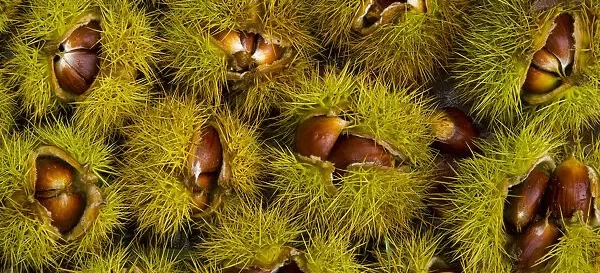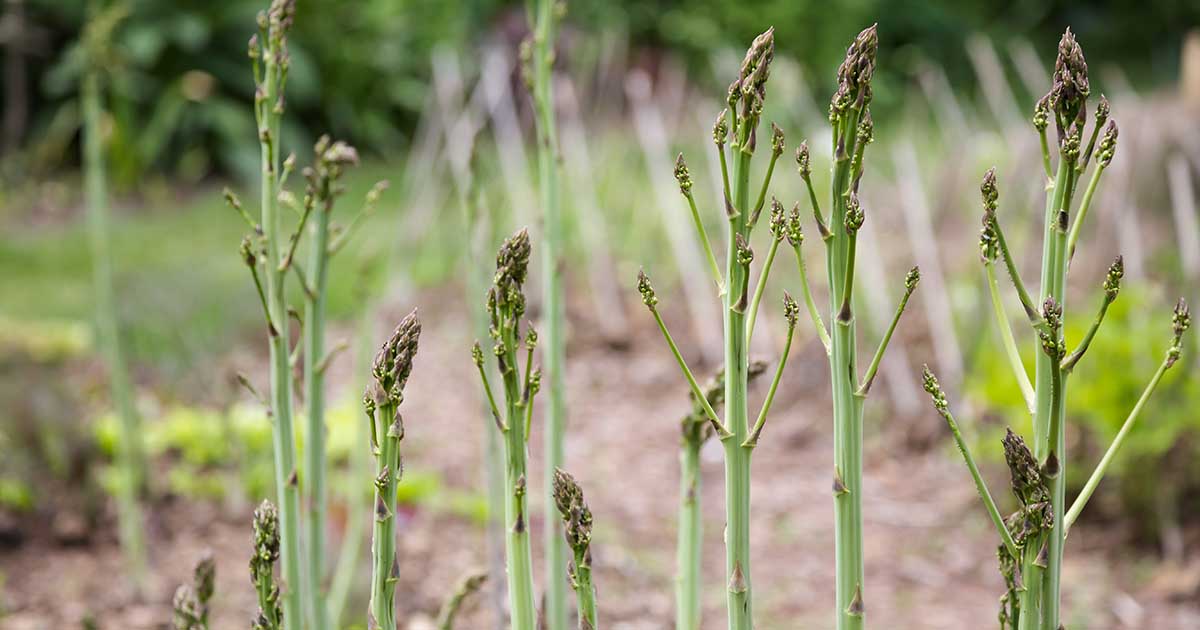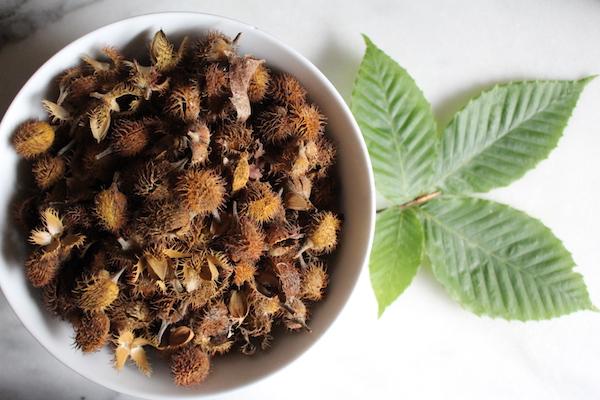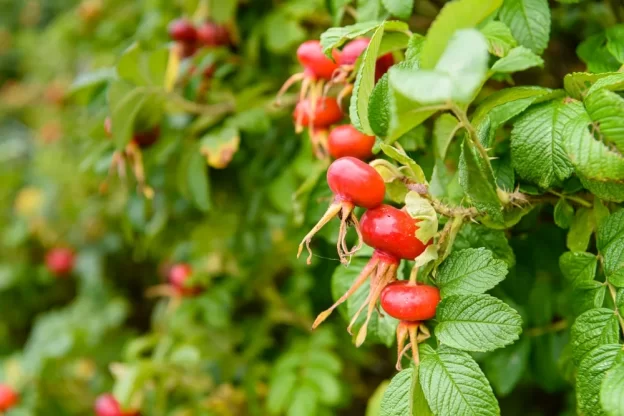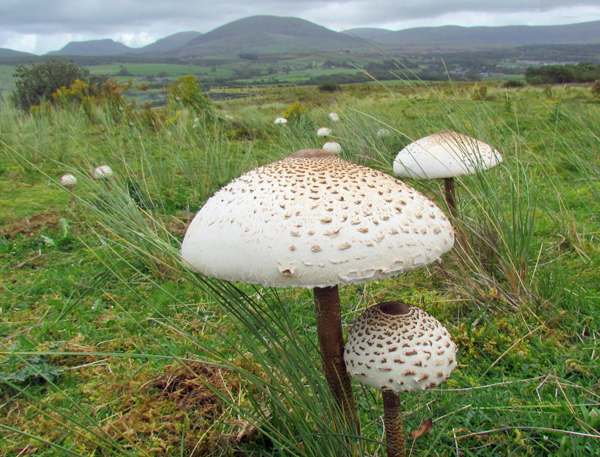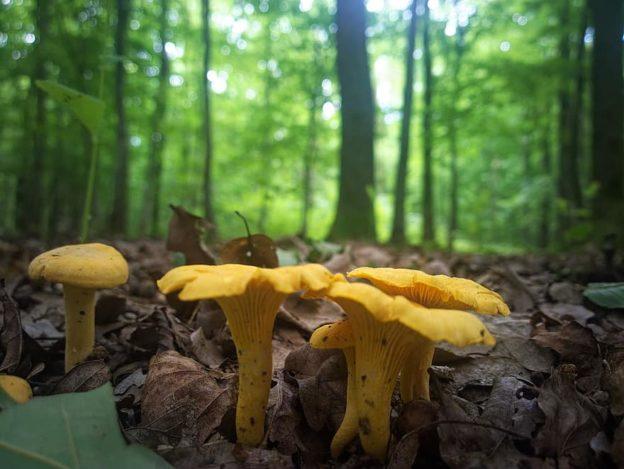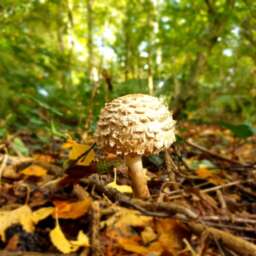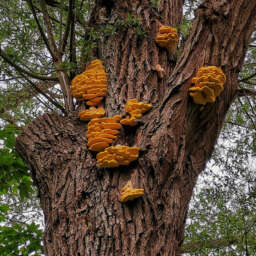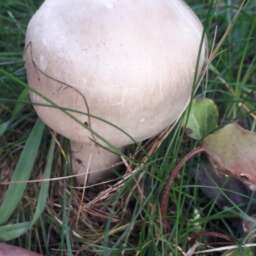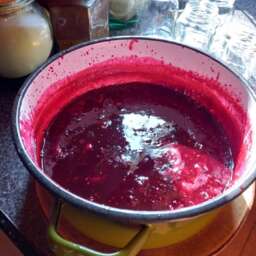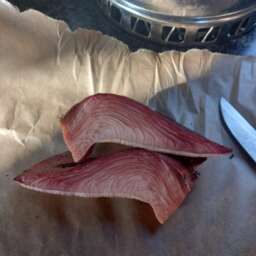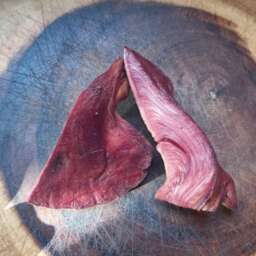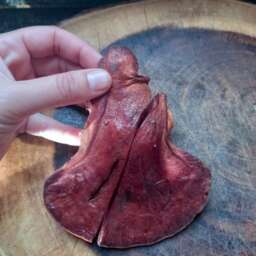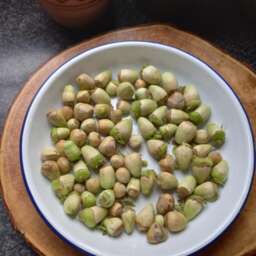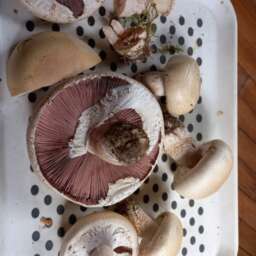Foraging in November: A Guide to What You Can Find
What can we forage in November? As November unfolds, the UK landscapes transform, offering a diverse array of edible wild plants and fungi. Foraging becomes a particularly fruitful venture during this time. The shift from the vibrant life of summer to the serene dormancy of winter marks a period when nature’s bounty is at its most varied, providing a plethora of foraging opportunities.
This guide delves into the delights of foraging in November, offering insights and tips for both beginners and seasoned foragers.
Why Forage in November? November’s unique climate conditions in the UK create a perfect natural pantry. The cooler temperatures slow down the growth of plants, concentrating their flavours and nutrients. This month is characterized by the last of the autumnal fruits and the emergence of hardy winter greens, alongside a variety of nuts and fungi.
Foraging in November is not just about harvesting food; it’s an immersive experience that connects you with the seasonal cycles of nature. It’s a chance to observe the changing landscapes, understand the ecological patterns, and appreciate the subtle transitions in flora and fauna.
What can I Forage in November?
- Mushrooms: The damp, cool conditions make November ideal for mushroom foraging. Varieties such as chanterelles, oyster mushrooms, and hedgehog mushrooms are commonly found. It’s crucial to forage mushrooms with caution, as some species are poisonous. Joining a local foraging group or consulting with a mycologist can enhance safety and knowledge.
- Nuts and Seeds: This is the prime time for foraging nuts like hazelnuts and chestnuts. These nuts are not only delicious but also rich in energy and nutrients, perfect for the winter months. Foraging for nuts also offers an insight into the habitats of various wildlife, as these nuts form an essential part of their diet. They also form an essential part of our but don’t take more than you need.
- Berries: While many berries have passed their peak, late bloomers like rosehips and sloes are still available. Rosehips, high in vitamin C, are excellent for making syrups or teas. Sloes, the fruit of the blackthorn bush, are famous for their use in making sloe gin, a traditional winter liqueur.
- Wild Greens: Hardy greens like nettles and dandelion leaves are still available. These greens are often overlooked but are packed with vitamins and can add a unique flavour to dishes.
Mushrooms to Forage in November
Foraging for mushrooms can be both rewarding and challenging, especially for beginners. In November, the UK’s woodlands and fields offer a variety of mushrooms that are not only delicious but also relatively easy to identify. Here are three of those mushrooms to forage during this month: Some easier to find than others!

- Field Mushrooms (Agaricus campestris): The field mushroom is one of the most familiar and widely consumed mushrooms. It resembles the cultivated white button mushrooms and can be found in pastures and grassy areas. These mushrooms have white caps that may develop a brownish hue as they mature. The key to identifying field mushrooms is their pink to brown gills and the pleasant, mushroomy smell. They are excellent in cooking, offering a mild and versatile flavour.
- Oyster Mushrooms (Pleurotus ostreatus): Oyster mushrooms are easily recognizable due to their unique shape and growth pattern. They typically grow on the sides of trees, resembling an oyster in shape, and can be found in both deciduous and coniferous forests. Their caps range from white to a soft grey or light brown. These mushrooms have a delicate texture and a subtly sweet, anise-like flavour, making them a popular choice for culinary use.
- Puffballs (Lycoperdon perlatum and others): Puffballs are a great choice for novice foragers due to their distinctive round shape and lack of gills. They are found in meadows, lawns, and woodland edges. When young, they are white and firm inside; as they age, they turn brown and develop a spore-filled cavity. Only collect puffballs that are pure white inside, as this indicates they are still young and edible. They have a mild taste and can be used in a variety of dishes, often as a substitute for tofu. They also make great Giant Puffball Burgers.
Foraging Tips for Mushrooms:
- Always be 100% sure of your identification before consuming any wild mushrooms. If in doubt, consult an expert.
- Use a field guide or a foraging app to help with identification. The Collin Fungi Guide is often regarded as the best.
- Remember that over-foraging can damage local ecosystems. Be mindful and sustainable in your approach.
Mushrooms are not just a culinary delight; they are also a gateway to understanding the complex ecosystems of the UK’s forests and fields. Foraging them responsibly can add an exciting and educational dimension to your outdoor adventures this November.
Nuts to Forage in November
Nuts are a forager’s treasure in the autumn months, providing nutritious and delicious rewards for those willing to search the UK’s woods and hedgerows. In November, several types of nuts reach their peak and are relatively easy to identify and harvest. Here are three of the most accessible nuts to forage during this time:

- Sweet Chestnuts (Castanea sativa): Sweet chestnuts are a classic autumnal find, easily distinguishable by their spiky green husks. These nuts are typically found in both wild and cultivated chestnut trees across the UK. Once the husks open, revealing the brown, shiny nuts inside, they are ready to be harvested. Sweet chestnuts are versatile in cooking, known for their sweet, earthy flavour and can be roasted, used in stuffings, or incorporated into desserts.
- Hazelnuts (Corylus avellana): Hazelnuts, also known as cobnuts or filberts, grow in the UK’s woodlands and hedgerows. They are housed in a fibrous husk which splits open as the nut matures. Hazelnuts are ready when the shell turns a deep brown. Rich in protein and unsaturated fats, they are a nutritious snack and can be eaten raw, roasted, or used in baking.
- Walnuts (Juglans regia): While not as common as hazelnuts or chestnuts, walnuts can still be foraged in the UK, particularly in parks and gardens with mature walnut trees. The nuts are encased in a green, fleshy husk that splits and blackens as they ripen. Once the husk is removed, the hard, wrinkled walnut shell inside can be cracked to reveal the edible nut. Walnuts are known for their distinctive, rich flavour and are excellent in both savoury and sweet dishes.
Foraging Tips for Nuts:
- Nuts are best foraged after they have fallen to the ground.
- Wear gloves when handling chestnuts and walnuts as their husks can be prickly and can stain hands.
- Be mindful of wildlife that relies on these nuts for their winter food supply. Harvest sustainably by taking only what you need.
Foraging for nuts in November is not only a delightful way to connect with nature, but it also provides a sustainable source of food that can be enjoyed in various culinary creations. The experience of gathering nuts in the crisp autumn air is as rewarding as the harvest itself.
Berries to Forage this Autumn
Berry foraging in November offers a delightful experience as the cooler temperatures bring out the best in some late-season varieties. These berries not only add a burst of flavour to various dishes but are also rich in vitamins and antioxidants. Here are three easily identifiable berries that are ripe for foraging in the UK during this time:

- Rosehips (Rosa spp.): Rosehips, the fruit of the wild rose plant, are a foraging favourite in November. These small, red-orange berries can be found on rose bushes in hedgerows and woodlands. Rich in Vitamin C, they are perfect for making syrups, teas, and jams. Rosehips have a tangy, slightly sweet flavour, making them an excellent addition to both sweet and savoury dishes.
- Sloes (Prunus spinosa): Sloes, the fruit of the blackthorn bush, are small, dark blue-purple berries with a sharp, sour taste. They are traditionally used to make sloe gin but can also be used in jellies, sauces, and desserts. Sloes are best foraged after the first frost, which softens their skin and reduces their astringency.
- Hawthorn Berries (Crataegus monogyna and Crataegus laevigata): Hawthorn berries, or ‘haws,’ are another common find in the UK during November. These small, red berries grow on hawthorn trees and are known for their mild, nutty flavour. Hawthorn berries can be used in jellies, chutneys, and wine, and are reputed to have various health benefits.
Foraging Tips for Berries:
- Always ensure correct identification of berries to avoid inedible or toxic varieties.
- Use a foraging guide or app for assistance, especially if you’re new to foraging.
- Harvest berries sustainably, leaving some for wildlife and future growth.
Foraging for berries in November not only provides a sustainable source of nutritious food but also an enjoyable way to engage with the natural environment. These berries offer a glimpse into the rich diversity of the UK’s flora and invite foragers to explore and appreciate the bounty of nature.
 Click Here for The Foragers Calendar:
Click Here for The Foragers Calendar:
A Month by Month Guide to What You Can Harvest
Safety and Sustainability
Foraging in November responsibly is paramount. Understanding the importance of correct identification cannot be overstated, especially with fungi. Utilize field guides, apps, or local foraging experts to ensure safety.
Ethical foraging also involves being mindful of the environment. This means foraging in a way that allows plants to regenerate and sustain their populations whilst also leaving enough for the local wildlife. Do not over-harvest. This is the last fruits and seeds of the season and they have a job to do.
Adhering to local laws and regulations regarding foraging is also crucial, as some areas have restrictions to protect the ecosystem at certain times of the year.
Finally, practising the principle of taking only what you need ensures that there is plenty left for wildlife and other foragers.
Foraging in November offers a unique opportunity to engage with the natural world in a deeply meaningful way. It’s a time to appreciate the abundance of nature, learn about the local ecosystem, and enjoy the seasonal offerings.
What are you Foraging This November?
Whether you’re a beginner or have years of foraging in your basket, share your harvests and thoughts in the comments below.
